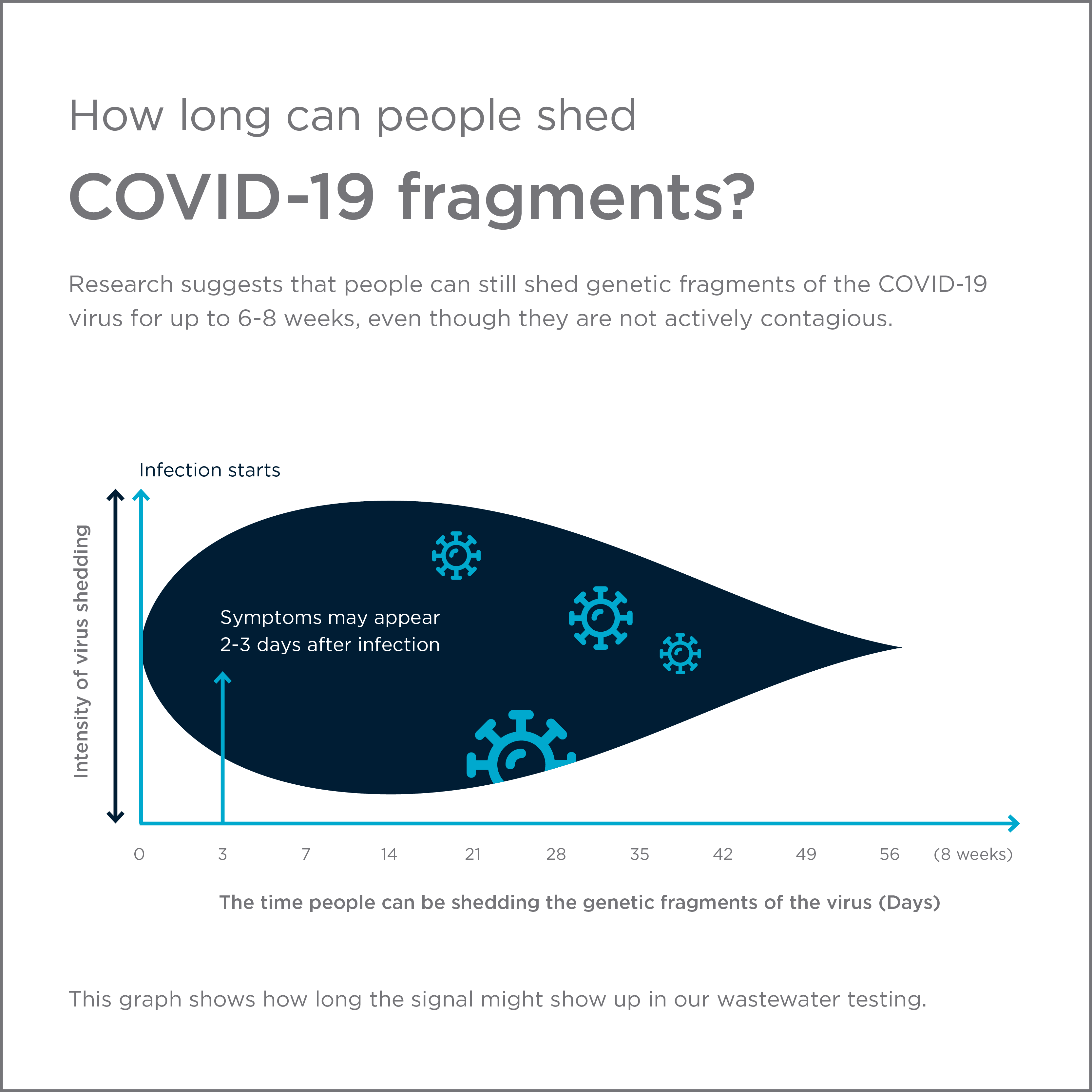We’re using wastewater testing to help trace community transmission of COVID-19. We’re looking for a SARS-CoV-2 (the virus that causes COVID-19) signal through wastewater testing.
But when we get a positive test result, what does it mean? And what should we do? We’ve spoken with our researchers, including Dr Warish Ahmed, to get your questions answered.

Our research team, led by Dr Warish Ahmed, is getting to the bottom of tracking SARS-CoV-2 in our wastewater.
Why are we getting regular positive tests?
People can shed genetic fragments of the virus for up to six-to-eight weeks after recovery, even though they’re not actively contagious. Wastewater tests are designed to alert health authorities to a potential issue, rather than pinpoint specific active cases of the virus.
What do positive wastewater tests mean?
Positive tests can pick up old cases, but could also signal new cases, so it’s a useful alert for people with symptoms to come forward for testing. Health authorities can then direct their attention to certain areas and do follow up testing. It also reminds us to maintain social distancing measures.
Where do positive tests come from?
Positive tests can come from local people in the community. They may come from travellers passing through, or people in quarantine. They may occur when discharges from boats or ships enter wastewater systems. Positive tests can also come from transient workers who may have used local toilets.

Why is wastewater testing important?
Infected people shed the virus in their faeces about three to five days before showing symptoms. Getting an early signal of infections in an area helps health authorities act early on local measures to limit infection spread.
How many infected people do you need in an area to get the virus signal?
This depends on the rate of virus being shed and the collection, processing, and measurement methods, all which can vary. We collect composite wastewater samples over 24 to 36 hours, so our rate of detection of the virus signal in the community is stronger than a single sample in time.
Brisbane testing has demonstrated that we can measure a single positive test in a catchment of 300,000 people, and modelling has shown examples where the test can find a positive virus signal in populations of one million people.
Is the virus live?
Experts say genetic fragments of the virus found in sewage are not live or dangerous. And based on our knowledge of viruses and water, drinking water is well protected against all viruses, including SARS-CoV-2.
Are there ever false results?
Occasionally the test will show false-positives and false-negative results. The chance of false-positive detections is very low when wastewater sample collection practices are good (avoiding contamination of samples) and the laboratories follow proper quality assurance and control methods.
False-negative detections are expected to become more frequent as case numbers become low, because virus fragment concentrations move below detection limits or are missed when samples are taken. False-negatives may also occur due to deficiencies in sampling and analysis methods.


15th December 2021 at 3:57 pm
Is there a particular part of the RNA sequence that’s being tested for? I’m asking because I’m wondering if spike proteins from the mRNA vaccines being dumped into the wastewater system might show up as false positives? Thank you for your responses.
15th December 2021 at 5:33 pm
Hi Pierre, thanks for your question. Someone who has been vaccinated and has not had COVID-19 will not show a positive signal in waste water testing.
Thanks,
Team CSIRO
4th August 2021 at 2:27 pm
How do these fragments get into the faeces? Have they been ingested into the GI tract via the mouth / nose? I don’t understand a possible pathway from the respiratory system into wastewater. Do the fragments actually enter the bloodstream via the lungs and get into urine / faeces that way, or do they enter wastewater because the infected person sneezes / coughs while in the bathroom / toilet?
5th August 2021 at 10:11 am
Hi David,
Thanks for your question. The ACE2 receptor protein in the human body is specifically targeted by the COVID-19 virus and is a point of entry for a wide range of human cells. ACE2 receptors are particularly prevalent in cells in the lining of the lungs and the small intestine, which reflects the high load of the virus in these tissues. The virus is eventually excreted by humans via faeces, sputum, urine, and other bodily fluids which end up in wastewater streams via the toilet, bathroom, and/or basin.
Thanks,
Team CSIRO
3rd August 2021 at 6:18 pm
Actually positive results of covid in sewage samples may not actually mean covid is recently present: the virus has some retroviral properties
https://www.sciencemag.org/news/2020/12/coronavirus-may-sometimes-slip-its-genetic-material-human-chromosomes-what-does-mean
30th April 2021 at 4:25 pm
There is a lot of doubts worldwide and opinions on mask specifications are you aware or tested the most effective mask popular opinion is that N95 or KN95 are most effective
26th February 2021 at 6:18 pm
Keep up the good work!